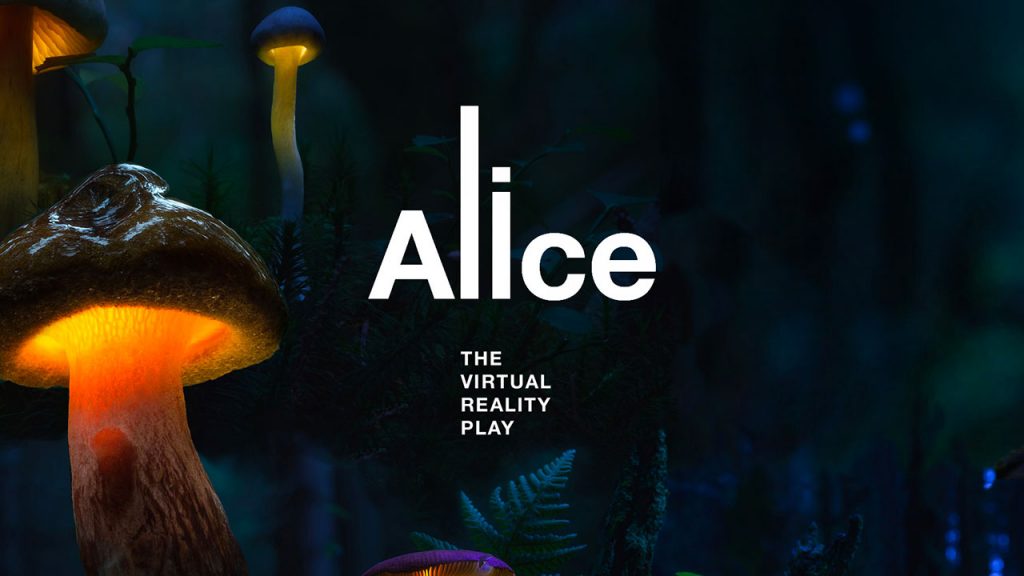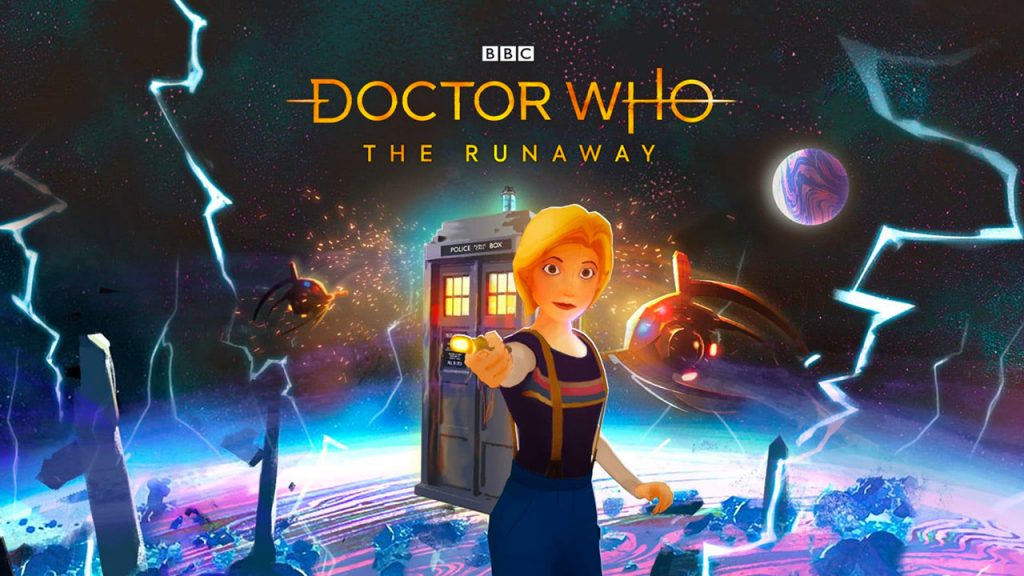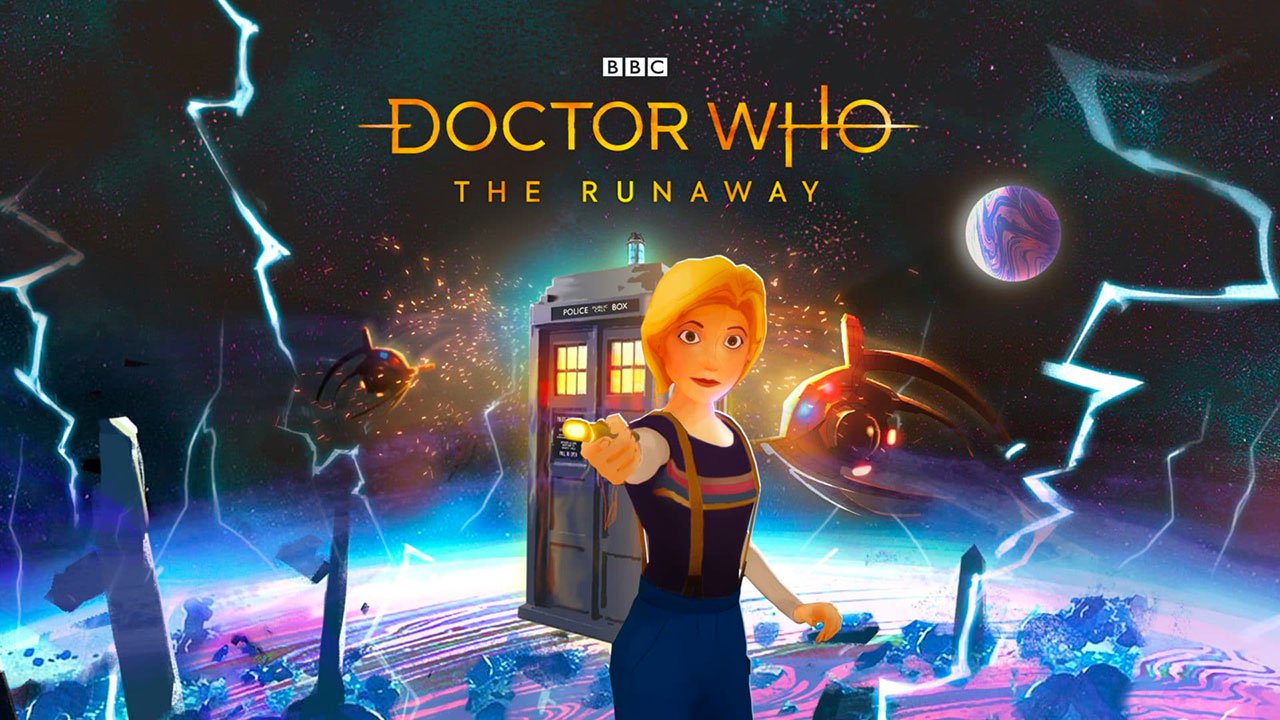Presented at Tribeca last year, DOCTOR WHO: THE RUNAWAY (available on Steam and Rift) opens the doors of the Tardis for an exclusive episode of the saga. And a lot of troubles for our hero. What could be more natural than finding Mathias Chelebourg, an immersive author who has already proven his full mastery of fantastic universes and interactive environments, in command? We met with Mathias and his producer Pierre-Arthur Goulet at Passion Animation in Paris.
Down the rabbit hole: origin(s)
Mathias Chelebourg (creator) – I started working on advertising films in Paris, often with mix media (animation, live) while trying to get out of the traditional paths of creation, with new narrative tools. Discovering Oculus’s Kickstarter I knew I had to jump in, and I was among the first in France to receive the DK1. Then I visited brands (Dior, Prada, Chanel …) and agencies with it to sell my first immersive projects. At the time it was totally steampunk! The other place where I could really experiment was in contemporary art, so I created exhibitions with my first virtual content, supported by Première Heure (link), including VARIATIONS where I mapped an environment in 3D, to ask the question of a space’s reality. It was already a form of free roaming.
M. C. – From there I worked with DV group, Okio Studio who were experimenting in this sector with brands: Prada, Renault… It was a real sandbox of experiences where you could challenge yourself on the linear, the real time, interactive. But my real fantasy was space… and cinema: I want to offer routes, sets to the viewer to push the immersion even further. At DV, I offered them this crazy idea of having actors, in a real-time experience, with physical interactions and animation. We were lucky to find someone to finance a prototype… which he wanted to present at Cannes Film Festival 5 weeks later! With total freedom of creation, I immediately thought of ALICE’S ADVENTURES IN WONDERLAND as a perfect story to test everything I wanted. And that included physical, olfactory interactions, or even discussions with an actor. In Cannes in 2017, it worked very well, and this allowed us to present it in Venice and in several festivals later.

M.C. – ALICE opened doors for me, especially in fiction. Everyone started talking about theater and virtual reality, immersive theater. Among the projects proposed, I continued my discussions with Baobab Studios (link) to develop a project similar to ALICE with more artistic ambitions. So I make JACK in Paris, with my teams, and we push everything to the maximum. More space, a moving floor, actors and a high definition mocap, manipulable objects …
M.C. – The ambition was really to prove the effectiveness of virtual reality, at the crossroads of theater, video games and animation to create a genre of its own. We previewed JACK at Tribeca, also with real success. In the process we meet Lupita Nyong’o who agrees to record a voice the next day for episode 2 to come. Unfortunately the experience was not distributed afterwards, not being planned for platforms. Next I accepted ALONE for OCS / Empreinte Digitale, and I finished the documentary THE REAL THING with Benoit Felici. It was at that time that I met Passion (producer of Gorillaz’s music videos and several episodes of LOVE DEATH ROBOT) and the BBC to discuss DOCTOR WHO.
Pierre-Arthur Goulet (producer) – Passion got started on the back of ‘Who Framed Roger Rabbit’ and was founded by Andrew Ruhemann, we pursued commercial animation as well as music videos, creating the first Gorillaz videos as well founding a feature documentaries department who won their first Oscar with Searching for Sugarman, always keeping a strong graphic identity, and remaining a hub of artists in London and Paris. On the experiential, immersive and interactive, we started very early with GORILLAZ : on VR, we notably published a music video with Google Spotlight Stories, and we worked on an application in AR. We then created Passion Experience (link) to produce XR in all its forms: video mapping, real time, etc.
Doctor Who VR: a Tardis experience
P-A. G. – DOCTOR WHO: THE RUNAWAY is the result of a BBC call for projects which wanted to develop the Doctor Who’s IP in virtual reality, and to keep in touch with an audience interested in immersive / new media. Our proposal between animation and narration convinced them, which corresponded to our storytelling DNA at Passion. It was a great opportunity to work with Mathias, whose work I knew.
M.C. – We really wanted to offer a special experience of DOCTOR WHO, not just an extension of the universe. That’s what made the difference from the start. Then we had to catch up with a moving train: the coming season was filming, there was a new Doctor (Jodie Whittaker) and lot of new things! DOCTOR WHO is – with STARGATE SG-1 – one of my favorite tv shows. We were lucky to arrive on a project with a lot of creative freedom from the BBC. What to tell? How? Or What ? If you know the universe, you had to find the right way to import it into VR. From the start, I wanted a very dense, action-based narrative, with few sequences, a unit of place (the Tardis), and a single unit of time. The idea was for us to work on the twists and turns in the story with comedy, action, suspense.

P-A. G. – BBC offered us the opportunity to work with a screenwriter from the series (Victoria Asare-Archer) to take over the script originally proposed. It was necessary to bring our concept closer to the show, the universe, especially in terms of dialogues.
M.C. – In virtual reality there is a fragile balance as soon as we create interactions with characters. Do not release the tension, do not create a empty space. My first draft was already very tight. After ALICE and JACK, I am sure that working with theater methods is extremely relevant: unit of time, of space. More than animation, we came back with mocap process and very precise actress work. It’s a real 12-minute performance, over the entire duration. Jodie recorded the voice.
Reinventing an universe
M. C. – Today real-time VR is not at all mature to offer photo-realistic images. And that doesn’t interest me much … At Passion Animation they have a real cartoon spirit! On DOCTOR WHO, it seemed obvious to offer an offbeat look, not necessarily realistic. We have transcended the tools of real time; all textures are drawn by hand. In the end, we have an unprecedented degree of stylization, thanks also to our team coming from the animation industry.
P-A. G. – All this respecting the license and the universe of the show. We were inspired by the humor, the steampunk already present in DOCTOR WHO.

M. C. – The main challenge was to play with the Tardis. How to create rhythm in an enclosed space? Animation made it possible – to play with all possibilities. And we had the chance to go on the set in Cardiff to discover the real Tardis! Obviously a hardcore fan could find some differences there, but we worked from the original plan to reproduce the new Tardis as faithfully as possible. Our edits concern only a few details of the console. With the BBC we also worked on the gesture of the “sonic”: there too, these are important codes to respect!
P-A. G. – Several elements were new for us, and the season was in the middle of filming. Doctor Who evolved, a brand new Tardis also. To avoid any risk of spoilers, we had to wait until they finished shooting. So we took 6 months to write, develop, work on animatics and drafts – from June to December 2018. Then we presented the experience at Tribeca 2019 in preview.
M. C. – It was important to have this time of writing to prove that our concept worked, that the animation was relevant. I wanted to prove that there was not necessarily a need for gameplay, that the viewer could navigate the story with choices without influencing the story. The interaction is purely narrative, it only serves to invest the viewer in his role – not on the timing of the experience or on the ending. We considered a very controlled story, very written like a real episode but with interactions.
M. C. – DOCTOR WHO: THE RUNAWAY is already available on the Oculus and Steam stores, but also in a non-interactive version on Youtube. It was part of the parameters of the mission with the BBC to offer the experience to as many people as possible. As of writing, you had to think about the audience, the number of formats produced. It’s an integral part of a client’s broadcast mission like the BBC to anticipate that.
Exploring the future of storytelling
M. C. – In VR There is always a hardware challenge. But for each project we must look for the priority: narrative process, or technology … JACK was above all a technology challenge. Today, I will necessarily go to real time, it has become mandatory. The 6DOF and the ability to walk in open spaces give us real perspectives. I dream of exploring very large spaces, in total free roaming with the Oculus Quest – Like I did with SLEEP NO MORE. I’ve always had a connection to tangible physical space. The relationship between virtual and real is fundamental: meeting the theater world is inevitable. With Passion and other studios, we work on this type of large format projects. I’ve tested the confined spaces, the interaction with virtual beings, I’m ready for more.
M. C. – As an artist, in virtual reality, we very quickly found ourselves in meetings about broadcasting, distribution of our projects. And we prevent a lot of things by dreaming of a business model, a premiere in festivals. Stores distribution is not yet convincing, we are putting everything on the LBE today … We are testing! On my side I really want to explore narrative worlds that are still unknown, without imagining their destination. Fortunately, I am surrounded by producers who will work on the economy of the project and distribution strategy. My job is first to link technology and storytelling, to push everything to the maximum. It also allows us to build real partnerships with software companies, such as HP or Unreal, who use our projects to improve their technology. The real ambition is to study the Broadway model, or theater one. Even SLEEP NO MORE was criticized at first. Today as consumers, we are overwhelmed with content: we need exclusive (and rare) experiences. VR is one of the tools to come up with new ideas.
Through the immersive industry
M. C. – After a year and a half in Silicon Valley, I see a shortness of breath on the American side, which works on fundraisers. The promises of disruption of platforms, of the rise of VR are not fully there. Investors are going elsewhere. In France we experiment, with great support from public funding. French know-how is strong, and will continue. But we have to deal with international co-production, which is mandatory now given the small market we’re in. We keep a real “exception culturelle” in France that must be maintained. You have to look at the efforts made by French universities, Fresnoy also, to explore virtual universes long before the American Kickstarters started. Then only came the global hype on VR.
P-A. G. – My conviction is that headsets will ultimately be adopted by everyone. But before that, we rather work on concepts of immersive theater with technology. We want to be impressed, really immersed in a universe and above all live experiences with others. Everything you can’t do at home. We can now imagine “diving” into an animated film, into an imagination while avoiding the photo-realistic trap, and invite spectators to live it with us.



Leave a Reply
You must be logged in to post a comment.